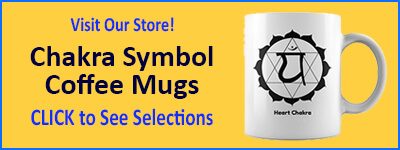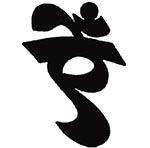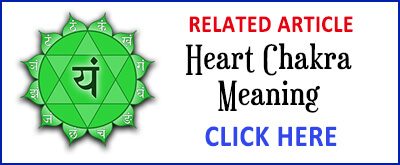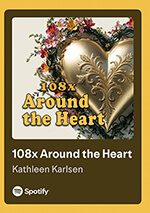One Word Mantras: Powerful Bija Seed Syllables
One word mantras include the powerful bija seed syllables as well as other significant words in Sanskrit. These words are often used individually or in combination with each other in mantras. Many are associated with specific gods and goddesses in the Hindu tradition. Each bija syllable is reputed to possess particular powers. The alphabetical list below includes many of the most common one word mantras or bija seed syllables.
Share this page with a friend!
Mantra Bija Syllables and Nature
The syllables can be correlated to energies in nature. They can also be thought of as aspects of our own divinity or distinct psychological traits. Bija syllables are believed to be the original sounds of creation. Bija mantras can be categorized by one of the five Vedic elements: fire, water, space (ether), earth, and air. Each seed syllable also relates to a particular planet.
Types of One Word Mantras
This article explains nine of the most used one word mantras: OM, AIM, DUM, HALIM, HRIM, HUM KRIM, KLIM, and SHRIM. In addition, this article includes the one word mantras for the chakras (Root: LAM, Sacral: VAM, Solar Plexus: RAM, Heart: YAM, Throat: HUM, Third Eye: OM, Crown: AH). There are also discussions of seven of the main astrological planets and their mantras.
How Bija Mantras Affect the Meridians
Meridians are energy channels flowing through the body. There are 84 meridians that end in the soft and hard palate of the mouth. Meridians are the channels used for acupuncture. The meridians ending in the mouth are activated during mantra chanting. Depending on the mantra, the tongue touches certain points repeatedly. This send a signal through that meridian.
Increasing Energy Flow
When meridians are activated through chanting, an increased flow of energy is created. This is believed to give greater health and vitality to the physical body. In addition, mantras can help dissolve negative thought patterns. Conversely, mantras can help to establish positive patterns in the mind and thoughts.
"Shakti bija mantras are probably the most important of all mantras, whether for meditation, energizing prana or for healing purposes. They carry the great forces of nature such as the energies of the sun and moon, fire and water, electricity and magnetism...."
Dr. David Frawley
The Power of Sanskrit Seed Mantras
Some linguists believe that Sanskrit is closely related to onomatopoeia, the making of words aligned with the sound associated with what is named (cuckoo, sizzle, snap, splash). This is especially true of the bija mantras. The bija mantras are Sanskrit syllables that are said to correspond to specific meanings or aspects of creation and existence.
Language as a Vibrational Science
Sanskrit is an energetic language, meaning that its power comes directly from vibration energy rather than from social usage. Other sacred languages such as ancient Hebrew have the same connection to the building blocks of creation. Many languages have beneficial or spiritual aspects. For example, English is said to derive from an angelic tongue. The name England comes from “Engel land” or the land of the angels. In esoteric literature, the “angels” are the “angles of God.”
Sanskrit and Energy Flow
The use of Sanskrit corresponds closely with the meridian system and the flow of energy through the physical body as well as the energetic system of the body. The bija seed syllables are some of the most important building blocks for mantras. Mantras are worded formulas with specific impacts on the body, mind and consciousness.
AIM: Creation through the Divine Feminine
AIM (ieem) is the feminine counterpart of the bija mantra OM. The “AI” in AIM is pronounced “eye.” AIM is a manifest form of OM, that which is created and seen versus that which is purely in consciousness. AIM is the supreme shakti or feminine force known as Adi Shakti. AIM appears in many mantras to the goddesses and the Divine Mother.
Seed Syllable of the Goddess Saraswati
AIM is the seed mantra of Saraswati, goddess of knowledge, wisdom, music, art, and speech. A seed mantra is the basic essence God’s consciousness personified in one or more deities. Saraswati is revered in Hinduism, Jainism and some Buddhist sects. Her name means “one who leads to the essence of self-knowledge.” She has many beautiful names to acknowledge her many aspects. A few of these are the following:
Saraswati Mata: Mother of Water and Lakes
Bilvani Mata: Mother of the Woods
Chandrika Mata: Mother of the Moon
Hamsini Mata: Mother Who Rides the Swan
Kadambari Mata: Mother of the Kadamba Flowers
Malini Mata: Fragrant Mother
Saradha Mata: Mother of the Harvest
Mantra for Knowledge and Understanding
AIM is also a general mantra for a higher knowledge and understanding. This can take the form of a guru or our own higher intelligence. AIM can help to orient us, motivate us and increase our will power to succeed.
Healing Power for the Voice
In terms of physical healing, AIM strengthens the voice and vocal chords. Astrologically, AIM is related primarily to the moon and secondarily to the planet Mercury. An example of a mantra utilizing AIM is “OM AIM Saraswatyai Namaha.”
ANG: Crown Chakra One Word Mantra
There are multiple seed sounds attributed to the crown chakra. Some believe the crown is not a single chakra, but a cluster of chakras. The seed sounds are AH, ANG, and AUM. The crown chakra is the seat of enlightenment, known in Sanskrit as the Sahasrara chakra. Sahasrara means “thousand-petaled.”
Role of the Crown Chakra
According to Eastern traditions, the crown chakra is related to god-consciousness (samadhi) and the transforming powers of the divine. The crown can be viewed as the father, or spirit energy, drawing the mother, or earth energy, from the lower chakras upward.
AUM (OM): The Essential One Word Mantra
The Sanskrit word OM is familiar to most people as the quintessential mantra. OM is the fundamental mantra connecting us to higher reality and the highest aspect of our own beings. OM is believed to be a sound of the whole cosmic manifestation.
Sound of the Universal Hum
OM is the sound of the universe, the sound from which all other sounds are formed. OM represents past, present and future. OM is a seed or building block of creation. OM is the mantra of assent, much like saying “amen” at the end of a prayer. OM affirms the intention of the mantra.
Four Parts of AUM
OM can be viewed as having four parts: A-U-M followed by the sound of silence. The A (ahhh) represents the beginning, the connection to the physical world. The U (oooh) signifies the maintaining of the physical universe. The M (mmmm) is the transformative energy of the universe and the realm of thoughts and feelings. As noted, the fourth sound is the silence that follows the AUM. This is pure consciousness and knowingness.
AUM and the Hindu Trinity
OM represents both the manifest and unmanifest. In the form of AUM, this seed syllable is similar to the trinity of God in many other traditions. In that sense, the A represents Brahma or the Father; the U represents Vishnu, the Son or the preserver; and the M represents dissolution, the Holy Spirit or Shiva. OM is commonly associated solely with the latter (Shiva) as the cosmic masculine force.
OM for Clearing the Mind
OM is often included at the beginning of a mantra or chant to clear the mind for meditation. OM is said to draw the energy from the bottom of the spine to the top of the head. The energy of OM is one of expansion and ascension.
OM for Healing Negativity
In terms of healing, OM brings prana into the subconscious mind. OM is the sound of the sun and sheds light on addictive tendencies and negative emotions, bringing them to light for healing and transmutation. One of the simplest OM mantras is “OM, Shanti, Shanti, Shanti” meaning “OM, Peace, Peace, Peace.”
OM and the Third Eye Chakra
The seed sound for the third eye chakra is OM. The sixth chakra is the third eye, the seat of spiritual vision. The third eye is the center of imagination. The word “imagination” itself means the ability to hold an “image” firmly in mind. This is the first step towards bringing that form into manifestation. This practice of visualization is also a proven technique in sports, musical performance, and other endeavors. Thus, strengthening the third eye aids in both intellectual and artistic pursuits.
BRIM: Planetary Mantra for Jupiter
The astrology mantra for Jupiter (Brihaspataye) includes the seed syllable “brim” which connects to the fundamental vibration of the planet Mars. In Vedic astrology, Jupiter is known as Guru (spiritual teacher), Devaguru (teacher of the gods) and Brihaspati (Lord of Light). Jupiter is a planet of work, development, education and higher spiritual insight. Some astrologists view Jupiter as the planet of optimism, success and generosity. Jupiter is immense, mature and benevolent.
BUM: Seed Syllable for the Planet Mercury
The astrology mantra for Mercury (Bhudhaya) includes the seed syllable “bum” which connects to the fundamental vibration of the planet Mars. In Vedic astrology, the planet Mercury is associated with intelligence, logic, speech and friendship. Mercury also governs memory and transportation. Mercury is a messenger, delivering thoughts from one person to another or back and forth between celestial beings.
CAM: Seed Syllable Mantra of the Moon
Mantras to the moon often include the seed syllable CAM which connects to the fundamental vibration of the moon. In the Hindu tradition, the deity ruling over the moon is called Chandra. The name Chandra means “bright and shining” in Sanskrit. The moon in Vedic astrology represents the mind, including thoughts, feelings, and psychology.
The Moon and Religious Holidays
Many religions still use the moon to schedule significant holidays. For example, Easter is celebrated on the first full moon after spring equinox. The Chinese New Year starts following winter solstice and the second new moon. Passover in the Jewish tradition always happens on a full moon. In the Hindu tradition, the Festival of Lights called Diwali happens on the new moon when the sun enters Libra.
DUM: One Word Mantra for Salvation
DUM (duhm) is a mantra of divine salvation: a combination of protection and self-discipline. This is the mantra of Durga, who saves us from difficulties whenever possible. Durga leads a divine army and rides a lion.
DUM for Earthly Fire
This is a powerful fire mantra with a weapon-like effect. DUM is an earthly fire rather than an etheric fire. The martial energy of DUM overcomes opposition and is also a transformative energy to eliminate sorrow and obstacles both within and without. DUM grants self-control. Listen to a Durga Mantra using the seed syllable DUM.
Qualities of DUM
DUM with a long vowel (pronounced doom) is similar but softer and more feminine. This form of DUM also neutralizes negative forces projected against us. DUM is beneficial for tissues in the body and can be used to burn away toxins and also to increase the digestive fire. DUM is a solar energy.
Mantra Using the Seed Syllable DUM
An example of a mantra utilizing DUM is “OM DUM Durgayei Namah,” which is a mantra combining protection and self-discipline. Learn all about Durga and listen to her mantras! Go to the article Durga the Warrior Goddess.
HALIM: One Word Mantra for Protection
HALIM (hleem) is related to hrim. The fiery and stimulating “ra” sound is replaced with the “la.” “La” is a water energy. This brings about a stabilizing and holding effect, often viewed as holding back negativity sent by others. HALIM is thought to bring water, earth and space together.
Halim for Bliss or Destruction
If HALIM is used gently, it is a mantra of bliss (ananda) and ecstasy. Used more forcefully, this seed sound can neutralize negativity. Used harshly, HALIM can destroy. HALIM can stop energy that has already been set in motion. Ideally, HALIM is the seed sound for protection.
One Word Mantra of the Goddess
HALIM relates to the goddess Baglamukhi. This goddess is believed to seal the energy of an individual from negative outside influences, especially negative speech. Bagalamukhi is associated with the color yellow. She is one of the ten wise devis, or feminine forms of God.
One Word Mantra for Stillness
HALIM brings stillness through control of the body, mind, prana and senses. Turned inward, HALIM helps to stop inward chatter and is extremely useful for yoga and meditation. As such, HALIM is a highly beneficial tool to reduce internal agitation.
Mantra Syllables for Abrupt Change
Use HALIM with care—things can be brought to an abrupt halt. Chanting mantras for peace (shanti) to slow things down first is advised. From an astrological standpoint, HALIM is primarily related to Saturn and the north node of the moon (rahu) with a Mars influence. An example of a mantra utilizing HALIM is “OM HALIM Bagalamukhi, Sarva Buddha Bagalamukhi.”
HAM: One Word Mantra for the Throat Chakra
The Sanskrit seed sound for the throat chakra is HAM, pronounced “hum.” The throat chakra symbol has sixteen petals. In the center is a triangle pointing downward and a white circle representing akasha or ether. The throat chakra is connected to creativity and self-expression as well as the actions of speaking and chanting. The throat and thyroid are where emotions, intentions, praise and criticism are expressed.
Role of the Throat Chakra
The fifth chakra is the throat chakra or the Vishuddha chakra. In Sanskrit, Vishuddha means “especially pure.” The throat chakra is the place where energy is qualified through sound for blessing or bane with every word spoken. Thus, the throat is the place of greatest vulnerability and greatest strength. The throat chakra and thyroid are also connected to creative expression.
HRIM: One Word Mantra for the Heart
HRIM (hreem) is a mantra for the heart: the spiritual heart, the emotional heart and the physical heart. This mantra aids in longevity by energizing the heart. Due to the healing and stimulating influence on the heart, HRIM is also said to promote circulation and positively affects the lungs and nervous system.
Seed Mantra for the Goddess Parvati
HRIM is a combination of “ha” for prana and “ra” for fire and light with “ee” for focus and motivation. The sound HRIM may help us to connect with the deity of our choice at the level of the heart. This aids in allowing divine power to enter into our hearts. This bija mantra specifically relates to Parvati, the consort of Shiva. HRIM allows for both deep feeling and thought.
One Word Mantra for the Sun
In Vedic astrology, HRIM relates to the sun, which is the planet of the heart. The solar energy and fire of the sun brings the outward expression of attraction and charisma. The solar energy of HRIM is gentle, similar to a sunrise. HRIM increases the finer energy of the heart. Conversely, HRIM can also be used harshly or negatively to mesmerize another person.
One Word Fire Element Mantra
HRIM can be viewed as the prime mantra of all three shakti (feminine) powers: creation, preservation and destruction. HRIM can dissolve and carry away on the one hand and bring about joy and ecstasy on the other. In terms of the five elements, HRIM is mainly a fire mantra with some air element. An example of a mantra utilizing HRIM is “OM HRIM Parvati Mata.”
HUM: One Word Mantra for Divine Fire
HUM (huhm) is a fire mantra that can help to kindle the consciousness. This is an etheric fire connected to lightning, pranic fire, and the breath. This lightning can also be used for protection. HUM is sometimes referred to as the “seed syllable of wrath” or righteous anger.
Mantra Syllable of Shiva
HUM is the mantra that Shiva projects from his third eye to destroy all negativity and burn up all human desires. HUM is connected closely to the transformative power of the trinity. HUM with a long vowel (pronounced hoom) is slightly softer and related to fierce goddesses like Kali, especially in her personification as Chandi.
Mantra of the Goddess Chandi
Chandi is a personification of one of the shakti powers of Brahma. The name “Chandi” means “she who tears apart thought.” Chandi proclaims her preeminence as both the formless and the formed universe. This specific form of her power is more like a sword versus lightning.
Long Form of the Seed Mantra
HUM with the long vowel also has a wooing characteristic, like the sound of a cow calling to her calf. In this form it is both invocative and protective. HUM is focused in the navel area and digestive fire as well as the fire of the mind. Both the long and short forms of HUM can strengthen the immune system to ward off pathogenic attacks.
One Word Astrological Mantra
Astrologically, the forms of HUM are related to fiery planets like the Sun and Mars or Ketu (the south lunar node). An example of a mantra utilizing HUM is “Maha Shakti Chandi Shakti HUM” meaning “Praise to Mother Chandi who protects me with her fire.” This mantra can also be used to create a protective forcefield around a dwelling.
Resource: Learn more about Agni Deva: Hindu God of Fire.
KLIM: One Word Mantra for Divine Magnetism
KLIM (kleem) is a softer counterpart to “krim” (see section on KRIM below). Rather than projecting energy and electricity outward, KLIM draws all towards itself with a type of divine magnetism. KLIM carries the shakti power of attraction and is said to help hold or fix things in place like gravity.
Seed Mantra of Attraction and Desire
KLIM can be used related to any deity, but is particularly associated with Krishna, Sundari (Lalita) and the softer forms of Kali or Durga. As the seed mantra of attraction and desire, KLIM helps us to achieve our true desires in life.
One Word Mantra for Increasing Love
KLIM helps to increase love and devotion. It is a heart-focused mantra that is safe to use liberally. This makes KLIM one of the most widely used mantras among the bija seed syllables. KLIM brings divine love and beauty into our surroundings and our lives.
One Word Water Element Mantra
KLIM is mainly associated with the water element and is helpful for the skin and body fluids such as digestive fluids as well as the reproductive system. KLIM helps to increase our capacity to absorb nourishment.
One Word Mantra for Health
KLIM strengthens the immune system and brings contentment on an emotional level. An example of a mantra utilizing KLIM is “OM AIM HRIM KLIM Chamundaye Viche” which calls to Durga and removes negativity of all kinds.
KRIM: Mantra for Inner Concentration
KRIM (kreem) is a mantra of divine manifestation, specifically the divine electricity that exists behind all things. This is a form of creative shakti or feminine energy. KRIM is the most important of the consonant mantras beginning with a hard consonant.
Power of Sanskrit Letters
The Sanskrit letter “k” or ka is an initial thrust of energy or prana. The letter “r” or ra adds fire and the “i” (ee) adds focus. KRIM is transformative and associated with the solar plexus chakra. Fire mantras are useful for transformation and purification.
One Word Shakti Mantra
KRIM is the Kriya Shakti or power of action that operates on all levels. The inner action is the awakening of the kundalini. KRIM also rules over time, helping us to move from past karma and master time, space and action.
Mantra for Yoga and Concentration
The krim bija mantra is closely associated with yoga. This seed syllable aids in inner concentration. The krim bija mantra also awakens the kundalini in the base chakra. The krim bija mantra brings the chanter closer to the source of all life and energy.
RESOURCE: Learn more in the article KRIM Seed Syllable for Divine Elelctricity.
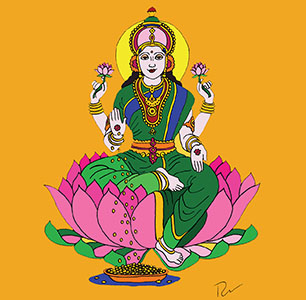
SHRIM: One Word Mantra for Wealth
SHRIM is mainly related to the earth and water elements, with some fire qualities. SHRIM is the ultimate mantra for wealth and prosperity. SHRIM is a gentle light, closer to the light of the moon than the light of the sun. This energy is like luster or glow rather than a blazing fire. The water and earth elements help to soothe the mind and improve health and fertility. SHRIM assists in reproductive health, especially for women.
Mantras Using the Seed Syllable SHRIM
SHRIM is soothing at all levels, bringing the type of surrender that allows for divine grace. An example of a mantra utilizing SHRIM is “OM HRIM SHRIM Lakshmi Bhayo Namaha” meaning “Lakshmi, reside in me and bestow thy abundance on all aspects of my existence.” For more about the power of SHRIM and to hear this mantra, see SHRIM: Extraordinary Wealth Mantra.
VAM: Sacral Chakra Seed Syllable Mantra
The sacral chakra seed sound is VAM, pronounced “vuhm” or “vung.” This chakra is defined as the seat of the self and the relationship of the self with others. The sacral chakra is said to house the unconscious. This is sometimes symbolized as the ocean.
Role of the Sacral Chakra
The sacral chakra is the realm of exchange and finances. If this energy is used improperly, addiction to sex or gambling can result. The second or sacral chakra is known as Svadhisthana. Svadhishthana means “one’s own abode.” The sacral chakra is also known as the seat of creation. For this reason, the sacral chakra is sometimes called the seat of the soul.
YAM: Seed Syllable for the Heart Chakra
The seed sound for the heart chakra is YAM, pronounced “yuhm.” As the seat of love and devotion, the heart expresses charity, compassion, and kindness. The heart is also a focus for beauty and culture. The energy of this chakra integrates opposite forces or brings two parts together. The heart chakra is symbolized by a twelve-petaled lotus with interlocking triangles.
Role of the Heart Chakra
The fourth chakra is the heart chakra or the Anahata chakra. In Sanskrit, “Anahata” means “unhurt, unstruck, unbeaten.” At the same time, Anahata means “pure” or “clean.” The heart chakra is believed to house an inner chakra or chamber where the spark of life resides. In the Western tradition, this is known as the three fold flame or the inner chamber of the heart. In the East, this is sometimes called Brahma’s Cave.
Seed Syllable Meditation for the Chakras
The one word mantras for the seven main chakras are as follows: LAM (root chakra), VAM (sacral chakra), RAM (solar plexus chakra), YAM (heart chakra), HAM (throat chakra), OM (third eye chakra) and OM, AH or ANG (crown chakra). See individual descriptions of these one word mantras above.
Chakra Meditation with Seed Syllables
A chakra meditation can be created with the chakra seed syllables combined with appropriate instruments for each chakra. Listen to the Chakra Chant Meditation above or learn more in the related article covering Chakra Sounds.
One Word Mantras in Vedic Astrology
Each of the planets have a seed syllable. This syllable is used in mantras to mitigate negative astrology or accentuate positive astrology. These single word mantras are often extended by beginning with OM, adding the Vedic name of the planet and ending with “Namaha” (I bow or I give honor). The planetary seed syllable mantras are included in the alphabetical list above.
Seed Syllables in Astrological Mantras
The use of an astrology mantra is a significant part of this branch of Vedic sciences. Each mantra is said to work in the subtle or unseen realms that influence our lives in every area. Additional information for each astrological mantra and videos can be found in the article Planetary Mantras.
Author Kathleen Karlsen
Kathleen Karlsen is a musician, artist, writer and speaker. She is the author of two books (Flower Symbols and Vocal Medicine) and over 200 articles. Kathleen, her husband Andrew, and their five children live in Bozeman, Montana. More about Kathleen Karlsen.
ONE WORD MANTRAS ARTICLE SUMMARY
One word mantras include the powerful bija seed syllables often used individually or in combination with each other in mantras. These syllables can sometimes be correlated to energies in nature. This article explains the most common one word mantras, the main planetary seed syllables and the one word mantras for the chakras.

